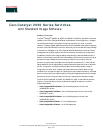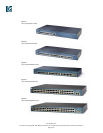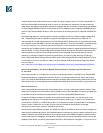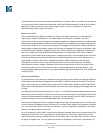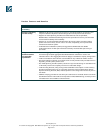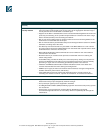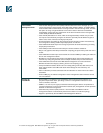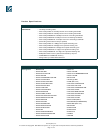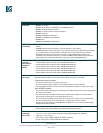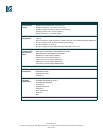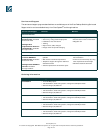
Cisco Systems, Inc.
All contents are Copyright © 1992–2003 Cisco Systems, Inc. All rights reserved. Important Notices and Privacy Statement.
Page 4 of 15
a RADIUS server allows dynamic port-based user authentication. In addition, 802.1x can coexist with port security
on a per-port basis. Security features can be deployed using Cisco CMS software security wizards, which ease the
deployment of security features that restrict user access to a server or portion of the network or restrict the
applications used in certain areas of the network.
Network Control
Cisco Catalyst 2950SX-48, 2950T-48, 2950SX-24, 2950-24, and 2950-12 switches deliver LAN-edge QoS,
supporting two modes of reclassification. One mode—based on the IEEE 802.1p standard—honors the
class-of-service (CoS) value at the ingress point and assigns the packet to the appropriate queue. In the second mode,
packets can be reclassified based on a default CoS value assigned to the ingress port by the network administrator.
In the case of frames that arrive without a CoS value (such as untagged frames), these Cisco Catalyst 2950 Series
switches support classification based on a default CoS value per port assigned by the network administrator. After
the frames have been classified or reclassified using one of the above modes, they are assigned to the appropriate
queue at the egress. Cisco Catalyst 2950 Series switches support four egress queues, which allow the network
administrator to be more discriminating and granular in assigning priorities for the various applications on the LAN.
Strict Priority Scheduling configuration ensures that time-sensitive applications, such as voice, always follow an
expedited path through the switch fabric. Weighted Round Robin (WRR) scheduling, another significant
enhancement, ensures that lower-priority traffic receives attention without comprising the priority settings
administered by a network manager. These features allow network administrators to prioritize mission-critical,
time-sensitive traffic, such as voice (IP telephony traffic), enterprise resource planning (Oracle, SAP, etc.), and
computer-assisted design and manufacturing, over less time-sensitive applications such as FTP or e-mail (Simple Mail
Transfer Protocol).
Network Availability
To provide efficient use of resources for bandwidth-hungry applications like multicasts, Cisco Catalyst 2950 Series
switches support Internet Group Management Protocol Version 3 (IGMPv3) snooping in hardware. Through the
support and configuration of IGMP snooping through the Cisco CMS software, these Cisco Catalyst 2950 Series
switches deliver outstanding performance and ease of use in administering and managing multicast applications on
the LAN.
The IGMPv3 snooping feature allows the switch to “listen in” on the IGMP conversation between hosts and routers.
When a switch hears an IGMP join request from a host for a given multicast group, the switch adds the host’s port
number to the group destination address list for that group. And when the switch hears an IGMP leave request, it
removes the host’s port from the content-addressable memory (CAM) table entry.
Multicast VLAN Registration (MVR) is designed for applications using wide-scale deployment of multicast traffic
across an Ethernet ring-based service provider network (for example, the broadcast of multiple television channels
over a service-provider network). MVR allows a subscriber on a port to subscribe and unsubscribe to a multicast
stream on the networkwide multicast VLAN.
Per VLAN Spanning Tree Plus (PVST+) allows users to implement redundant uplinks while also distributing traffic
loads across multiple links. This is not possible with standard Spanning Tree Protocol implementations. Cisco
UplinkFast technology ensures immediate transfer to the secondary uplink, much better than the traditional 30- to
60-second convergence time. This is yet another enhancement of the Spanning Tree Protocol implementation. An



